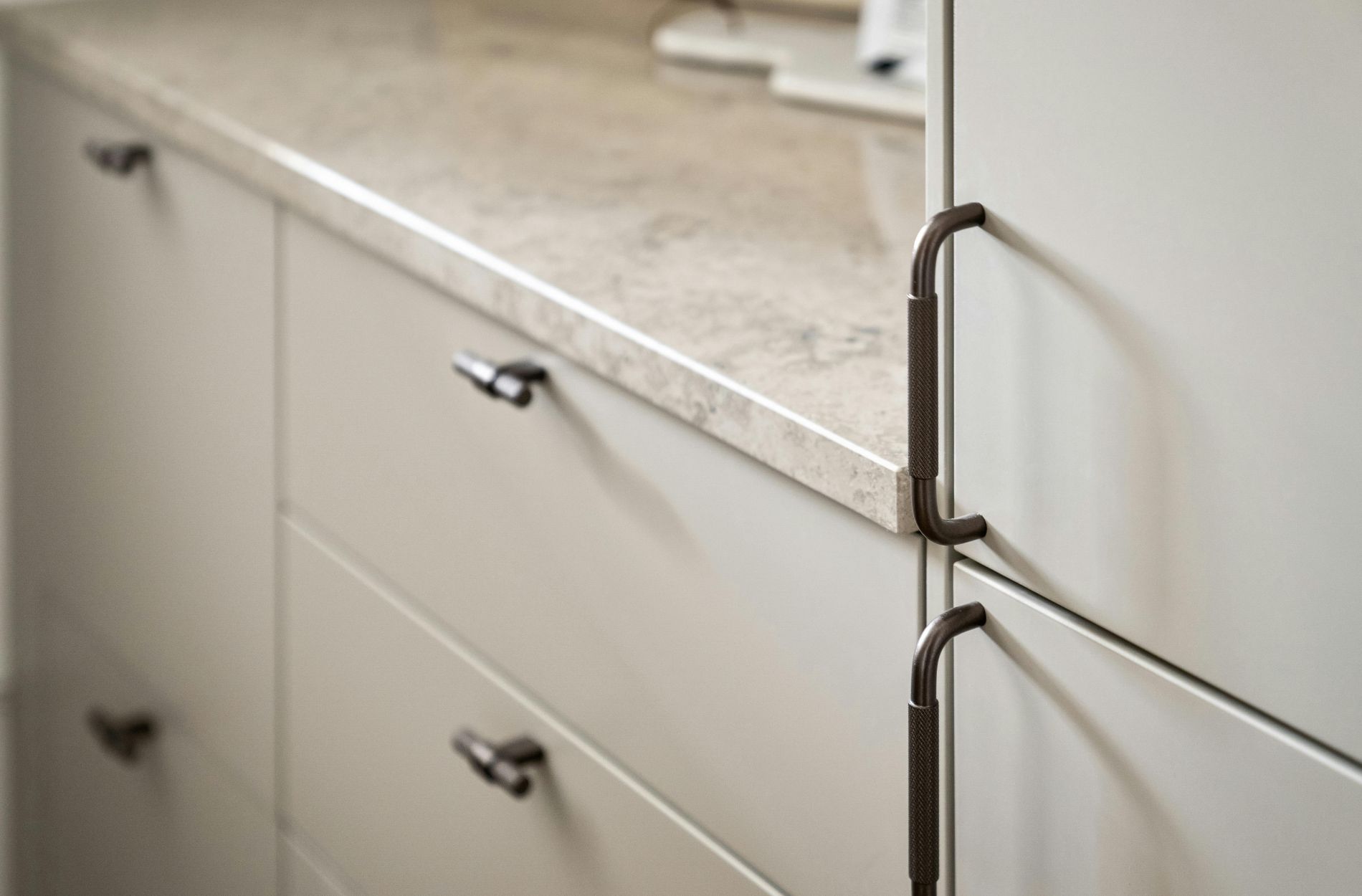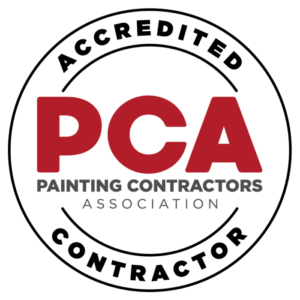Preparing Your Cabinets for a New Coat of Paint

Cabinet painting can completely transform the look of a kitchen or bathroom, giving tired spaces a fresh, modern feel. But achieving a flawless, long-lasting finish isn’t just about choosing the right paint color. The real difference comes from how well the cabinets are prepared before painting begins.
Preparation is the foundation of cabinet refinishing. Every step — from cleaning away years of grease to applying the right primer — determines how smooth the finish looks and how well it holds up to daily wear. In Minneapolis, where seasonal humidity and temperature shifts can be tough on wood, proper prep is even more important for ensuring durability.
In this blog, we’ll walk through the essential stages of cabinet preparation so you know what to expect when hiring professionals. You’ll learn how each step contributes to a polished, long-lasting result — and why skipping preparation almost always leads to problems down the road.
Step 1: Choosing the Right Paint Products and Tools
Before the first surface is cleaned or sanded, professionals decide which products and tools will deliver the best results. Cabinet painting is not the same as painting walls — it requires materials designed to handle heavy use, frequent cleaning, and exposure to moisture.
What professionals consider when selecting paint:
- Durability – Cabinet paints are formulated to resist chips, stains, and daily wear in high-traffic areas.
- Finish – Satin, semi-gloss, and gloss finishes are preferred because they’re easy to clean and highlight a smooth surface.
- Color quality – Professional-grade paints ensure even coverage and a rich, lasting finish.
- Premium formulations – High-end paints provide superior coverage, faster curing, and enhanced durability compared to standard options.
- Drying and curing time – The right paint balances quick drying with long-term strength, minimizing disruption while ensuring durability.
Why tools matter just as much:
- High-quality brushes and rollers – Prevent streaks and leave a smoother finish.
- Spray systems – Sometimes used for a factory-like, flawless appearance.
- Protective equipment – Ensures the job is safe for both painters and homeowners.
By selecting the right products and tools first, professionals set the tone for the entire preparation process. Every step that follows — cleaning, sanding, repairing, and priming — is designed to complement these choices and produce a result that looks polished and lasts for years.
Step 2: Cleaning and Degreasing
Before any sanding or painting begins, cabinets must be thoroughly cleaned. Kitchens, in particular, collect years of grease, cooking residue, and fingerprints that aren’t always visible but can ruin a paint job if ignored.
Professional painters start by giving every surface — doors, drawers, frames, and edges — a deep clean. This step ensures the primer and paint will bond securely to the wood rather than sitting on top of oils or residue.
Why it matters:
- Better adhesion – Clean surfaces allow primer and paint to properly grip the wood.
- Smoother results – Removing sticky buildup prevents blotches, streaks, or uneven texture.
- Longer lifespan – Paint applied to clean wood is less likely to peel, bubble, or chip prematurely.
Imagine painting over cabinets near the stove without cleaning first. Grease that’s invisible to the eye can cause the paint to slide or separate as it dries. Within weeks, you may notice peeling edges, rough patches, or areas where the finish won’t stay put. Professionals avoid these problems by starting with a spotless surface — one of the simplest yet most powerful ways to extend the life of your cabinet finish.
Step 3: Sanding and Smoothing
Once the cabinets are clean and dry, the next stage is sanding. This isn’t about stripping wood down completely — it’s about creating the right surface for paint to bond.
Professionals lightly sand doors, drawers, and frames to remove small imperfections and rough patches. More importantly, sanding scuffs the surface just enough so that primer adheres evenly. Without this step, paint often sits on top of the wood instead of gripping it, which leads to peeling and scratches over time.
Sanding also helps blur minor wear-and-tear from everyday use, like faint scratches or dents around handles. When done carefully, it sets the stage for a smoother, more polished finish once the primer and paint are applied.
Step 4: Repairs and Touch-Ups
Before primer goes on, professionals carefully inspect the cabinets for small flaws that could stand out after painting. Even minor dents, scratches, or gaps in the wood become more noticeable once a fresh coat of paint highlights them.
To avoid this, painters take time to make targeted repairs, such as:
- Filling cracks or gaps – Ensures a smooth, uninterrupted surface.
- Patching dents and scratches – Prevents blemishes from showing through the paint.
- Leveling uneven edges – Keeps cabinet doors aligned for a more polished look.
- Securing loose joints or panels – Improves both the appearance and durability of the cabinets.
These touch-ups are just as important as cleaning and sanding. They transform cabinets from “painted over” to “refinished.” Skipping this stage can leave visible marks under the paint — the kind of details that separate a professional-quality job from a quick fix.
Step 5: Priming
With repairs complete, the next step is priming. Primer acts as the bridge between the raw surface and the final paint color, ensuring that the finish looks smooth and lasts for years.
Professionals apply a high-quality primer designed specifically for cabinets. This layer does more than just prepare the surface — it actively prevents problems that could ruin the look of the paint.
What priming accomplishes:
- Blocks stains and wood tannins – Prevents dark marks or natural wood oils from bleeding through the paint.
- Improves adhesion – Gives paint a uniform surface to bond with, reducing the risk of chipping or peeling.
- Enhances color payoff – Ensures that the chosen paint color looks vibrant and consistent across every cabinet door and drawer.
- Extends durability – Adds another layer of protection so cabinets can withstand daily use in kitchens and bathrooms.
Applied correctly, primer creates the perfect base coat — setting the stage for a flawless, professional finish.
Step 6: Hardware Removal and Protection
The final stage of preparation is making sure cabinets — and everything around them — are ready for painting. This step is often underestimated, but it plays a big role in both efficiency and the quality of the finish.
Professionals carefully remove or protect anything that could get in the way of a smooth paint job, including:
- Cabinet hardware – Handles, knobs, and hinges are removed, labeled, and set aside for reinstallation later.
- Cabinet doors and drawers – Taken off their frames so every edge can be painted evenly.
- Surrounding surfaces – Counters, backsplashes, flooring, and appliances are covered to protect against drips or overspray.
- Work areas – Masking tape and protective coverings are applied to keep lines clean and sharp.
By handling hardware and surroundings with care, professionals prevent accidental paint marks and ensure cabinets can be reassembled neatly once the job is complete.
Why Professional Preparation Matters
Each stage of preparation — from cleaning and sanding to priming and protecting — might sound straightforward, but the quality of the work makes all the difference. A missed spot of grease, uneven sanding, or the wrong primer can cause problems that show up weeks after the job is finished.
That’s why professional cabinet painters treat preparation as the foundation of every project. Their training, tools, and experience ensure that:
- Surfaces are spotless and ready for paint.
- Minor flaws are fixed before they become permanent eyesores.
- Primer is applied evenly for maximum durability.
- Cabinets are protected from seasonal changes in humidity and temperature, especially in climates like Minneapolis.
- The final finish looks seamless — more like new cabinetry than simply “painted over.”
When preparation is done right, homeowners get cabinets that don’t just look great on day one but continue to hold up under daily use for years to come. It’s the step that separates a quick cosmetic update from a true investment in your home.
Achieving the Perfect Painted Finish
Cabinet painting is one of the most effective ways to update the look of your kitchen or bathroom, but the success of the project always comes back to preparation. Cleaning, sanding, repairing, priming, and protecting are the essential steps that ensure your new coat of paint looks seamless and lasts for years.
When handled by professionals, this process transforms more than just your cabinets — it elevates your entire space with a finish that feels brand new. Skipping or rushing through prep, on the other hand, almost guarantees problems like peeling, cracking, or uneven coverage.
At Premium Painting, we treat preparation as the most important part of the job. Our team combines careful attention to detail with high-quality materials to deliver cabinets that can withstand daily use and changing Minneapolis seasons.
Ready to give your kitchen a fresh, lasting upgrade? Contact Premium Painting today to learn more about our expert cabinet painting services — and see how proper preparation makes all the difference.





